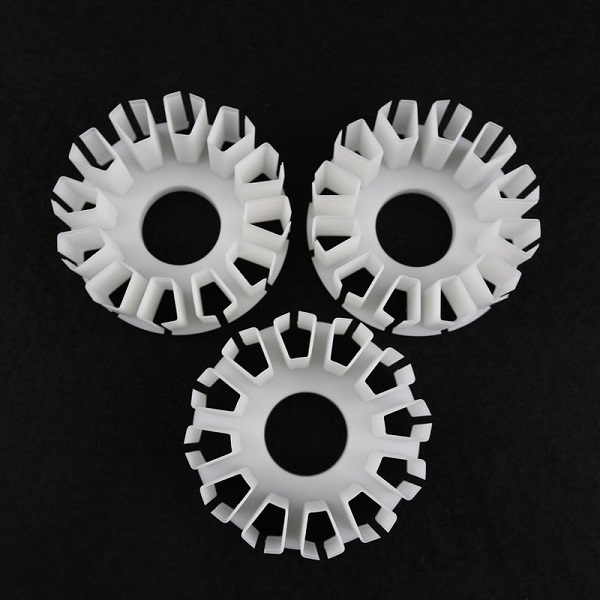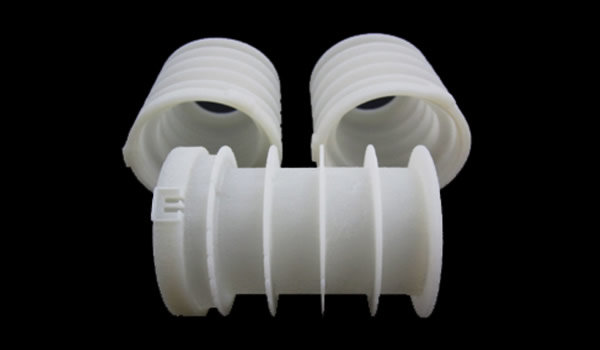Get in touch.
Dear,I will reply in 12 hours. All your message are protected!
Rapid Prototyping Services, Professional manufacturer of CNC Prototyping and 3D Prototyping in China.
3D printing is having a revolutionary impact on product design, rapid prototyping, and even production. Over the past few years, 3D printing technology has got significant advancement. It has become more affordable, quick, and dependable to make prototypes by using high-resolution 3D printers.
Selecting the right 3D printing technology to your prototyping project is essential. There are two most established and commonly used 3D printing services SLS printing service & SLA printing service. What are the differences between them? Which one is best suited to you? Here are some clues.

SLA (Stereolithography)
SLA 3D printing technology, invented in the 1980s, is the first 3D printing technology in the world but still prevalent in today’s manufacturing. It uses a laser to cure liquid resin into hardened plastics.
SLA printing uses UV lasers as the production tool and UV-curing resin as the raw materials. The resin is poured into a glass-bottom container. And then a UV laser shines UV light on the resin to selectively solidify it according to CAD design data.
There are disadvantages to SLA rapid prototype method:
1. Due to the ambient of UV light, it will be difficult for the post-printing processes. In this method, parts usually need to be cleaned with harsh chemicals, not friendly to the environment.
2. The resin used is often toxic and can release a harmful and unpleasant odor, which makes it unsafe to handle without gloves.
3. The resin is sticky and can cause workplace contamination if not cured properly. The resin has a limited shelf life. And new and old resin cannot be mixed together. Therefore, material cost is higher due to the wastage.
4. Support structures are always necessary, which will leave artifacts on the surface of printed prototypes.
5. It will be impossible to combine multiple materials or colors in a single print.
However, there are also many advantages of SLA printing method:
1. It has the strength of printing prototypes much more precisely. Among all 3D printed plastic prototypes, SLA rapid prototype has a high-quality surface finish, the highest resolution, and the clearest details. SLA printing service is ideal for small-scale parts.
2. The main benefits of SLA prototypes lie in the wide range of optical, mechanical, and thermal properties. Multiple materials with various properties are possible to print using SLA printing method.
3. SLS printers are compact and relatively easier to operate.
In conclusion, SLA prototyping is a great option for making highly detailed prototypes of low tolerance, smooth surface, and complex geometry. It is a rapid prototyping technology used in the industries of dentistry, jewelry, etc.
SLS (Selective Laser Sintering)
SLS is more commonly seen in industrial applications. SLS prototyping technology is the process of utilizing a high-powered laser to fuse small particles of polymer powder into mock-ups. But the mold is not finished right after SLS processing. It needs to be further processed in an oven or kiln to reach full strength.
The strengths of SLS printing:
1. One of the advantages of this process is that printed supports are not needed. The unfused powder supports the part during the printing. Thus, this method allows a lot of design freedom and is ideal for making prototypes of more complex geometrical structures, such as undercuts, thin walls. SLS prototypes also have excellent mechanical characteristics.
2. Another advantage of SLS printing is that it can process a much wider variety of materials. The most common material is nylon which is lightweight, high-strength, flexible, and resistant to impact, chemicals, thermal, UV light, water, and dirt.
The weaknesses of SLS printing:
1. One of the weak points of this method lies in the high cost of the machine. Most SLS machines are extremely high-end 3D printers. The operation and maintenance require skilled workers, which tends to incur further costs.
2. It is not easy to switch colors or materials.
3. As the raw material is polymer powder, it can be hazardous if inhaled.
All in all, the cost is a major downfall of SLS prototyping. It is the most expensive 3D printing method as far as the initial set-up and maintenance are concerned. But with high productivity, the price per mold is lower if it is a large production run. It is not right for small production runs, but it is a cost-effective alternative to injection molding.

SLA vs. SLS
Both SLA and SLS use lasers which are not only much more accurate, but also eliminate the need for heaters. However, ultimately, they are very different processes. Here is the direct comparison of these two methods for helping you choose the right one for your project.
1. Materials
With the SLS method, there is a wide range of materials to choose from. Generally, the materials are polyamides (typically, nylon) that can have additives to change the properties of color, strength, stiffness, etc.
For SLA printing, the raw material is flammable, toxic, and harder-to-clean resin. The SLA rapid prototype is very high in detail, but more rigid and brittle, not suitable for any mechanical purposes.
One significant difference between resin and nylon is their resistance to load stress. When the load is applied, resins tend to break in multiple pieces, which makes SLA prototypes are not very durable and not suitable for functionality testing. But nylon, with good elasticity, can return to the original shape with the elastic range. SLS prototypes are very durable, good for testing the functionality of the design.
You can choose the SLS or SLA printing service depending on the nature of your project.
2. Surface Finish
The most evident difference between SLA rapid prototype and SLS prototype is the surface finish.
In the SLS printing process, when sintering, the air that was originally in the powder goes to create microscopic air bubbles on the sintered material. You may not see those bubbles with your naked eye, but when you touch the surface, you might feel that it is slightly rough. But for SLA printing, polymerizing a liquid substance, usually, creates a smooth surface finish.
When it comes to the color, polyamide powder offers fewer options: black and white, or gray by mixing. There is no option for translucent or transparent in SLS printing. In contrast, using SLA printing, you can not only get translucent or transparent molds but also colored mold by adding color pigments to the resins.
SLA printing service is great for making molds for displaying while SLS printing is more suited to creating functional molds.
3. Post-processing
Both SLA and SLS require post-processing. SLA prototypes need to be cleaned to remove uncured resin, undergo a post-cure, thereby getting a smooth surface and higher strength. Polishing is mostly unnecessary in SLA printing. With SLS, the excess powder should be eliminated. And if you want to get smoother and shiner SLS molds, polishing can be applied to achieve it.
In addition, both SLA and SLS printed molds can be further cut, trimmed or glued to get much more and better surface finishes.
Cost
SLA printers are much smaller and cheaper than SLS printers, but it does not mean that SLS printed prototypes are more expensive. In fact, SLS printer is capable of producing larger models or more small models faster. If you are looking for a large number of molds, SLS printing is a more cost-effective option.
In Conclusion
SLS printing is more suited to large and high-volume production and to produce parts/molds that are focused more on functionality. In comparison, for parts/molds that require intricate features and details, and more visual appeal in order to attract attention in exhibition, SLA printing service may be the better way to go.
Of course, you can use both techniques in your project, but at different stages. For example, you may opt for SLS as a first prototype to keep costs down and test the functionality of your design, then choose SLA printing service for the final prototype, that is, the proofing prior to mass production.
Both SLS and SLA 3D printing technologies have cons and pros. As for which one works best for your rapid prototype manufacturing, it will depend on your project requirement.
© 2005-2025 Shenzhen Tuowei Model Technologies Co., Ltd. | All Rights Reserved 粤ICP备11096697号